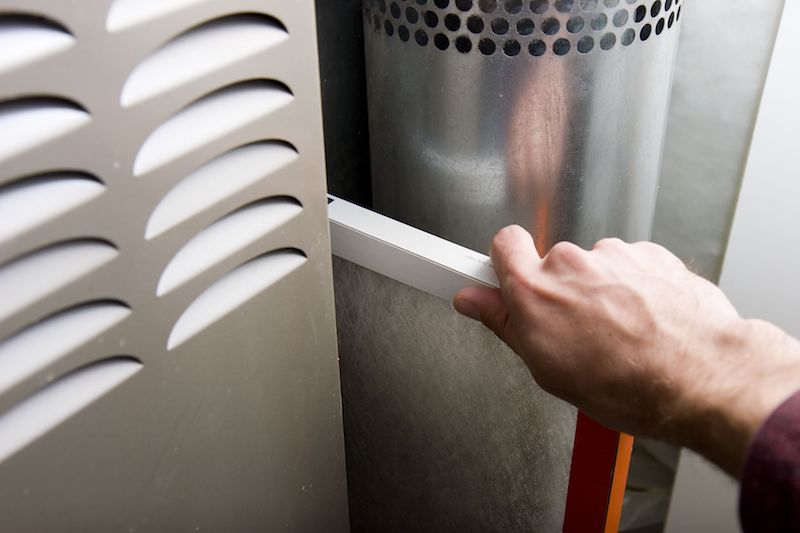
If you’re questioning whether your Marshalltown home has poor indoor air quality (IAQ), it probably does.
We are indoors a lot. In reality, we’re inside up to 90% of the time, according to the U.S. Environmental Protection Agency. And the air inside homes could be 2–5 times more contaminated than outdoors, which can create long-term health issues.
Most Common Sources of Poor IAQ
We’ve put together a list of the most frequent causes of inferior IAQ, the troubles they create and how you can remedy these indoor air pollutants. If you’re troubled by the air inside your home, we recommend consulting with a expert like Kapaun & Brown about which options are a good fit for your home.
Volatile Organic Compounds
Volatile organic compounds, or VOCs, are fumes leaked by common household items.
They’re found in paint and stains in addition to:
- Furniture
- Carpet
- Building materials
- Cleaning products
- Cosmetics
- Air fresheners
- Candles
When these fumes accumulate indoors, they can irritate your eyes, nose and throat. They might also lead to headaches and nausea. Regardless of whether your house is in a rural or industrial space, an EPA study found indoor levels of these chemicals can be 2–5 times worse than the air outside.
Always adhere to the manufacturer’s instructions when applying paint or spraying cleaning products. Opening a window can help fumes dissipate faster.
Air purification systems can also improve your air. This unit partners with your heating and cooling unit to freshen indoor air. When looking for a model, ensure it’s specifically created to eradicate VOCs.
Dust and Pet Dander
Dust and pet dander can irritate health problems like asthma and allergies, especially when it continually gets moved by your house’s comfort unit. While you can vacuum more frequently and get an improved air filter, an air filtration system may be a better fit.
This solution hooks to your HVAC equipment to provide mighty filtration. Some models provide hospital-level filtration for eliminating particles and bioaerosols.
Lasting Odors
Newer houses are securely sealed to increase energy efficiency. While this is good for your utility costs, it’s not so good for your IAQ.
Stale odors can stay around for a greater amount of time since your house is pulling in less fresh air. Because keeping your windows open throughout the year isn’t doable, here are two methods you can make your indoor air smell better.
An air purification system is put in your HVAC system to eliminate odors before they get released again. Search for one with a carbon filter and the capability to break down damaging VOCs. These systems can also help keep your loved ones healthy by getting rid of most bacteria and normal allergy triggers like pollen and mold spores.
A ventilation system takes out stale indoor air and replaces it with fresh outdoor air. There are two models of equipment (heat recovery and energy recovery), so call our professionals for more info on which kind is ideal for your residence.
Uneven Humidity
It’s critical your residence’s humidity stays even. Air that has too much moisture can cause mold, while dry air can create respiratory concerns.
Our specialists suggest 40–50% for top comfort. To keep yours steady, think over getting a whole-home humidifier or whole-home dehumidifier with your heating and cooling equipment.
In place of having to drag a humidifier from room to room, this product delivers balanced humidity across your house.
Carbon Monoxide
Carbon monoxide is colorless gas you can’t smell. It occurs when there’s insufficient combustion in fuel-burning units, like gas heating systems, water heaters or fireplaces.
It produces a serious health risk. In little levels, it can lead to flu-like ailments like headaches and nausea. It can be fatal in heavy amounts.
We suggest regular furnace maintenance to double-check your equipment is operating like it should. This service allows our technicians to see issues before they begin, including malfunctions that can lead to carbon monoxide leaks.
The best way to keep your residence free of carbon monoxide is to put in detectors. These alarms need to be on every floor by bedrooms and living areas.
Improve Your House’s Air Quality with the Kapaun & Brown Professionals
Know that your residence has inferior air quality but not sure how to improve it? Or unsure which option is ideal for you? Give our friendly HVAC specialists a call at 641-321-6747 or contact us online now. With free estimates and professional service, we’ll help you find the best option for your family and budget.
